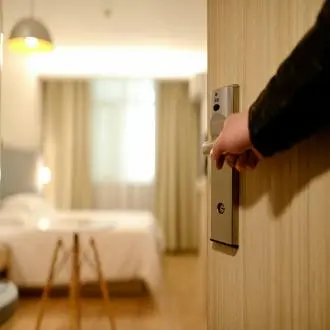Transcription woundsandtheirprotection(Ii)
Technical Disciplines of Prevention
According to the provisions of art.
15 of the Law on the Prevention of Occupational Risks, the employer must plan prevention by seeking a coherent set that integrates the technique, the organization of work, the working conditions, the social relations and the influence of environmental factors at work (safety or integrated prevention).
This prevention is articulated through different techniques or disciplines:
- Safety at Work: This is the set of techniques and procedures with the objective of eliminating or reducing the risk of work accidents occurring. Its main objective is the "fight against occupational accidents", which distinguishes it from other non-medical techniques such as hygiene or ergonomics.
- Industrial Hygiene: It is responsible for identifying, evaluating and preventing health risks generated in the work environment, taking into account physical, chemical and biological factors.
- Ergonomics: It is the set of techniques that aim to adapt the workplace to the individual.
General Preventive Measures in Facilities
Every hotel establishment must have a risk prevention manual and facilities prepared for emergencies.
This includes having emergency lighting, clear and illuminated signage for evacuation routes, indications on non-exit doors, an emergency plan for staff, instructions for guests in their rooms and an audible alarm system throughout the establishment.
In addition, textile elements such as carpets and curtains must be fireproof to slow the spread of a fire.
Prevention of Common Physical Risks
Falls on the same or different levels are one of the most common risks, caused by wet floors, clutter, or poor lighting.
They are prevented by maintaining order and cleanliness and wearing closed shoes with non-slip soles.
Bumps and cuts are avoided by moving with caution, maintaining good lighting, and checking the condition of tools.
To pick up broken glass, never use your hands directly, but rather a brush and dustpan, and protective gloves.
Electrical contact is prevented by not handling damaged plugs and by always unplugging equipment before cleaning, especially if using damp cloths.
Preventive Measures against Physical Load
Flooring staff are exposed to a high physical load when lifting or moving tools, pushing carts, or moving furniture.
To To prevent musculoskeletal injuries, preventive measures should be implemented: whenever possible, use mechanical means such as wheeled carts to transport loads; minimize the weight to be handled, for example, by using smaller product bottles or not filling garbage bags to the maximum; and respect the maximum loads to be handled (25 kg for men and 15 kg for women in ideal conditions).
It is also essential to avoid awkward postures, such as working kneeling or with your arms above your shoulders for long periods of time, for which you can use extension cords or ladders.
Prevention of Chemical and Biological Risks
Biological risk is present when handling dirty linen or cleaning toilets.
To avoid this, it is essential to use the protective equipment provided by the company
wounds and their protection ii




